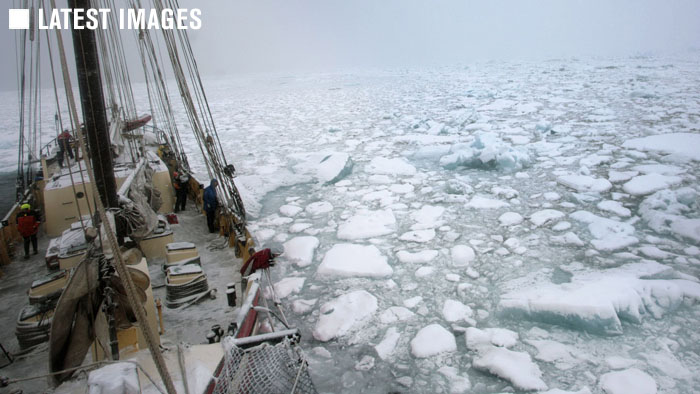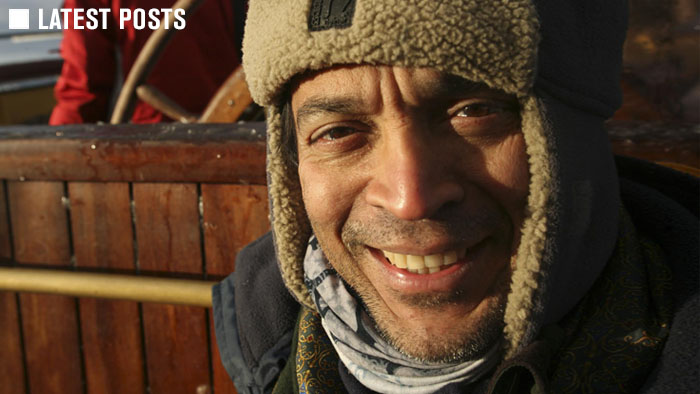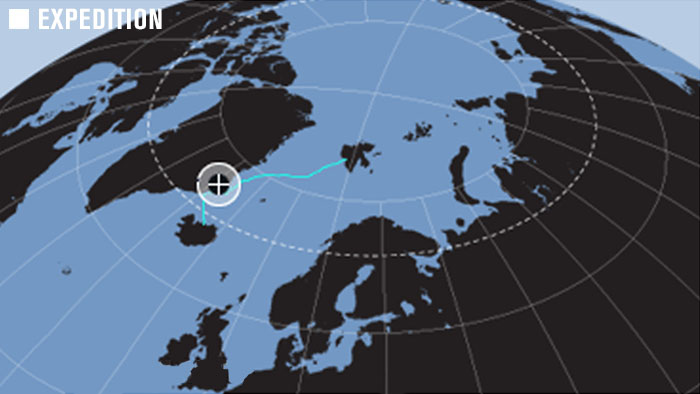Getting better by the hour
By Simon // Wednesday 3 Oct // 16:00:38 // View
[photopress:KB_freezing_sea_ice1.jpg,full,pp_image]
[photopress:EV_frozen_sea.jpg,full,pp_image]
It’s Wednesday, the sun is shinning again and the mountain scenery of Greenland gets better by the hour. Last night we even had a showing of the Northern Lights courtesy of a relatively clear night. Though we are now focusing on aspects of art, filming and writing – it’s a positive hive of activity aboard the Noorderlicht – we did also get some exciting science. This was the sort that could have kept us on Greenland a bit longer than planned – the sea freezing. We passed into Turner Fjord, a passage between a mountainous island and the mainland more than a fjord really, to look in awe at the glacial terrain elegantly explained by Carol as we went. Part way through the sea took on a slightly slushy consistency, a precursor to the sea freezing.
When a freshwater pond freezes, because the temperature of maximum density (4 deg C) is above the freezing point (zero deg C), a thin layer of very cold stable water sits at the surface as the pond cools towards zero and it freezes slowly from the top down. We have all seen that thin layer of ice that slowly builds up on a pond, lake or even puddle. It causes little problem for vessels in it’s early stages.
When the sea freezes, because the temperature of maximum density (-2.8 deg C) is below the freezing point (-1.9 deg C) for average salinity levels, convection in the water keeps going until the entire water column is close to freezing. This means that when the sea freezes it does so very quickly (hours) and this is why ships can get iced in at sea with little warning.
As we passed into the slush Gert decided to do a quick (15 minute) circle of the area. On the first pass it was slush. By the second it was 2-3 inch ice which was developing very quickly and the ship strained to pull out. One more circle and we would have been there for the winter! We moved on out of Turner Fjord rapidly and realised why, according to the “pilot”, that no one had visited it in the past 70 years. From here on we will be checking the sea temperatures before dropping anchor for the night!
In answer to Tom’s query about Arctic monkeys – the only type of monkey we find up in this part of the World is us – lol. As for Polar Bear pictures? We’ve yet to see the elusive creature but will do our best. With more cameras on board than at an international fashion show trust me, it will become the most photographed bear on the planet.
Read Full Post » Tags: Simon Boxall



